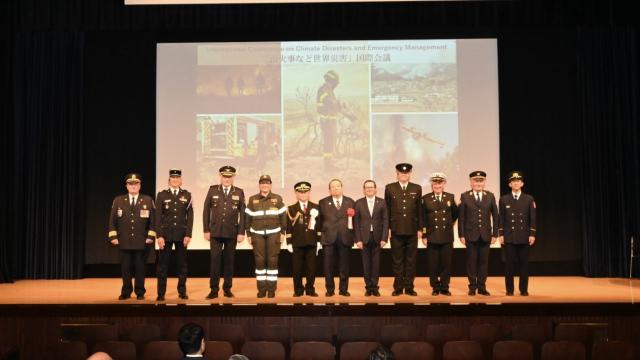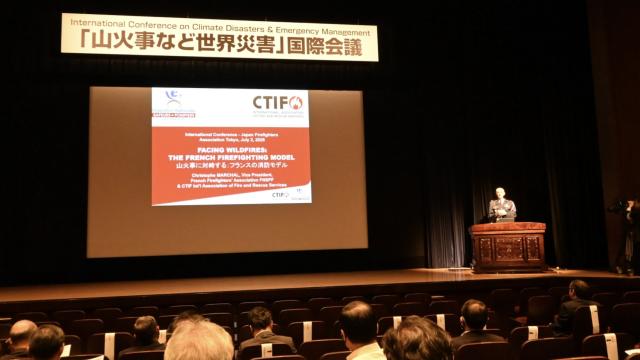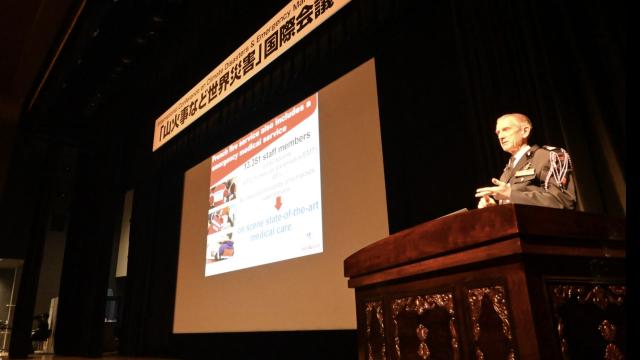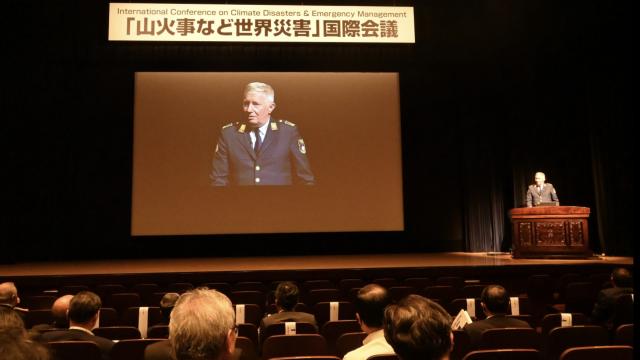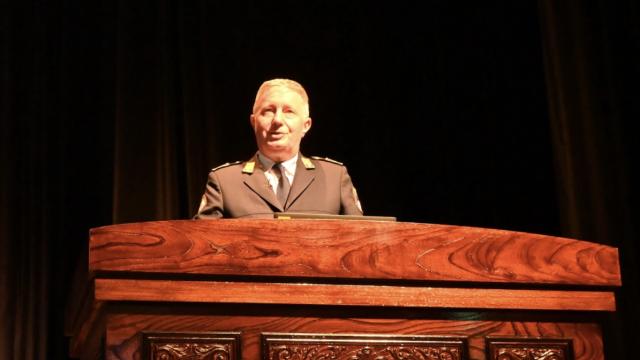
CTIF played an important role at the 2025 Tokyo International Conference on Climate Disasters and Emergency Management
Thank you for choosing Automatic Translation. Currently we are offering translations from English into French and German, with more translation languages to be added in the near future. Please be aware that these translations are generated by a third party AI software service. While we have found that the translations are mostly correct, they may not be perfect in every case. To ensure the information you read is correct, please refer to the original article in English. If you find an error in a translation which you would like to bring to our attention, it would help us greatly if you let us know. We can correct any text or section, once we are aware of it. Please do not hesitate to contact our webmaster to let us know of any translation errors.
 As various disasters continue to occur around the world, Japan has also been experiencing a series of unprecedented disasters in recent years. Responding to these disasters has become a critical issue for fire services. In light of this, we invited the heads of fire service agencies from seven major countries - Canada, France, Germany, Italy, Portugal, the United Kingdom, and the United States), as well as the President of CTIF (International Association of Fire and Rescue Services), to participate in the “International Conference on Climate Disasters and Emergency Management”, held on Wednesday, July 2, Reiwa 7 (2025) at 1:00 PM at Nissho Hall in the newly completed Japan Fire Service Headquarters Building.
As various disasters continue to occur around the world, Japan has also been experiencing a series of unprecedented disasters in recent years. Responding to these disasters has become a critical issue for fire services. In light of this, we invited the heads of fire service agencies from seven major countries - Canada, France, Germany, Italy, Portugal, the United Kingdom, and the United States), as well as the President of CTIF (International Association of Fire and Rescue Services), to participate in the “International Conference on Climate Disasters and Emergency Management”, held on Wednesday, July 2, Reiwa 7 (2025) at 1:00 PM at Nissho Hall in the newly completed Japan Fire Service Headquarters Building.
 CTIF was an especially invited guest along with representatives from seven countries heavily affected by recent wildfires. For the entire report from Tokyo, please refer to the attached file named "Translation" available above for download.
CTIF was an especially invited guest along with representatives from seven countries heavily affected by recent wildfires. For the entire report from Tokyo, please refer to the attached file named "Translation" available above for download.
The conference opened with a welcome address by Mr. Toshifumi Akimoto, President of the Japan Firefighters Association. He stated:
“Throughout human history, we have experienced various disasters and accidents across the globe. In recent years, possibly reflecting changes in the global environment and socio-economic conditions, we are witnessing large-scale disasters of a different nature than before. Fire services in each country have been making every effort to ensure the safety of their communities, adapting to local circumstances, but the challenges remain significant".
Toshifumi Akimoto, President of Japan Firefighters Association
CTIF (International Association of Fire Services for Safer Citizens) contributed its expertise in global fire safety, emergency response coordination, and technical innovation. While CTIF did not host a standalone event in Tokyo that year, its broader international agenda aligned with the conference’s themes of resilience, sustainability, and cross-sector collaboration.
 The presence of CTIF's vice president Christophe Marchal is also noteworthy, as he represented France as the Vice President of the French Firefighters’ National Association.
The presence of CTIF's vice president Christophe Marchal is also noteworthy, as he represented France as the Vice President of the French Firefighters’ National Association.
Below is a summary of the speech held by Milan Dubravac, president of the CTIF International Association of Fire Services:
CTIF (International Association of Fire and Rescue Services) operates with 14 specialized committees and working groups, making it a globally recognized organization in which Japan is also a member. Its mission is to improve the working conditions of firefighters worldwide by sharing experiences, research, and lessons learned from global incidents. CTIF promotes the exchange of knowledge related to fires and fire response through reports, manuals, and scientific publications.
In the European Union, there exists the EU Civil Protection Mechanism, which initially served as a mutual aid system among member states. Today, it has evolved into a framework capable of responding to incidents anywhere in the world. When a disaster occurs within the EU or globally, the affected country must submit a request for assistance. EU delegations located around the world are equipped to receive such requests from any country.
The Emergency Response Coordination Centre (ERCC) in Brussels receives these requests, disseminates information to member states, and coordinates offers of assistance. The support provided can range from supplies to personnel, and the requesting country decides whether to accept the assistance. Once accepted, the ERCC coordinates the delivery of aid.
The types of disasters addressed by the EU Civil Protection Mechanism include:
- Natural disasters such as floods, earthquakes, wildfires, and cyclones
- Man-made disasters
- Health emergencies, including pandemics like COVID-19
-
Terrorist attacks and medical evacuations, when necessary
During disasters, first responders are the initial line of defense, but the mechanism ensures rapid mutual support through close cooperation among member states.
Another key component is the European Civil Protection Pool, which allows the EU to deploy human and material resources owned by member states. These resources are strategically distributed across member countries to ensure immediate availability during emergencies.
In recent years, nearly every country has faced record-breaking wildfires, highlighting the growing need for such international support mechanisms.
Photo Credit: Wikipedia Creative Commons License
A panoramic view of Minato City, Tokyo, as captured from Shibuya Stream's 35th floor.
Date: 4 December 2023, 16:08:46
Author: David Kernan
Camera location
35° 39′ 25.14″ N, 139° 42′ 13″ E


